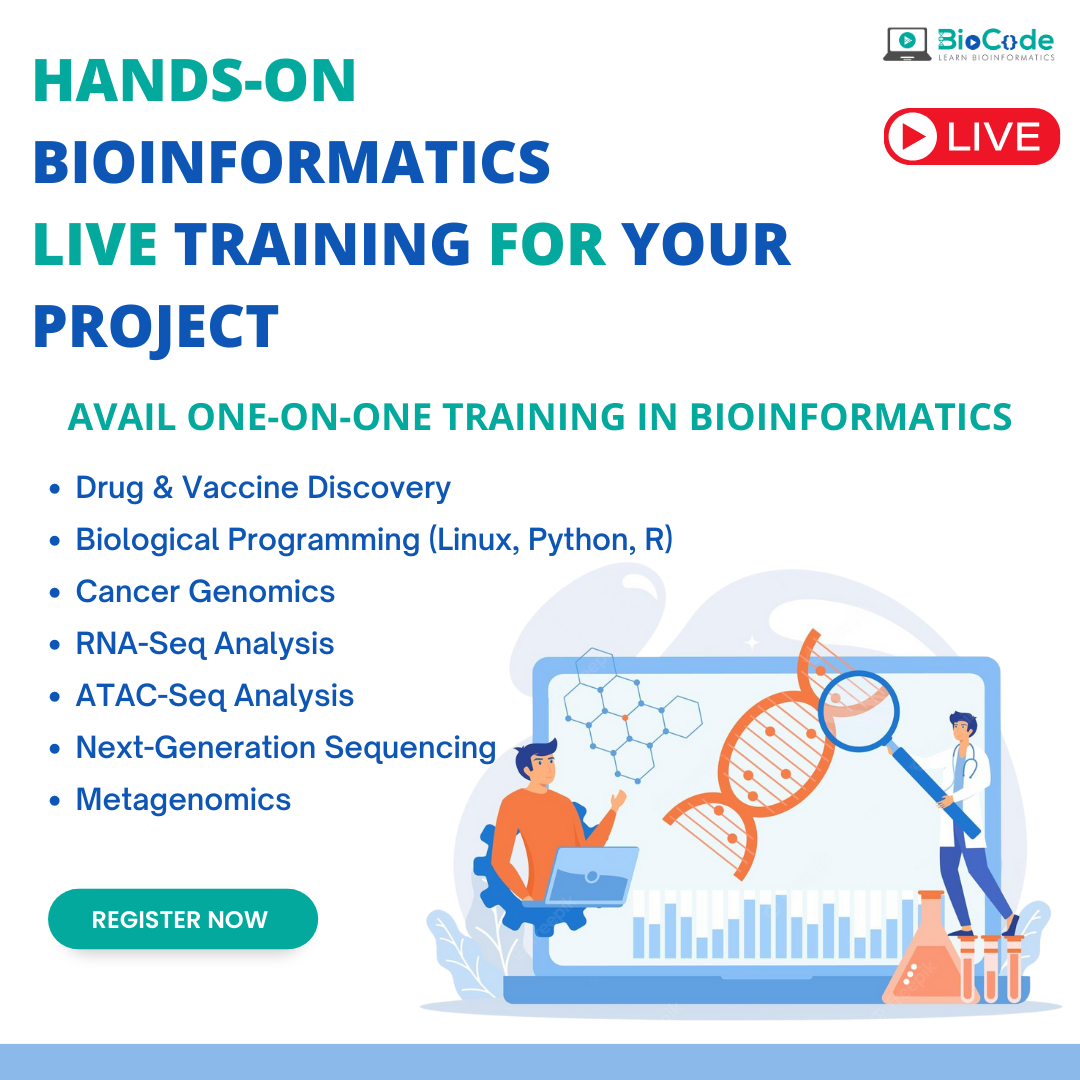Not known Facts About Bioinformatics Tutor
Not known Facts About Bioinformatics Tutor
Blog Article
The Only Guide for Bioinformatics Tutor
Table of ContentsHow Bioinformatics Tutor can Save You Time, Stress, and Money.The Basic Principles Of Bioinformatics Tutor Fascination About Bioinformatics TutorThe Facts About Bioinformatics Tutor UncoveredNot known Details About Bioinformatics Tutor
Of the total individuals included in the training, 80% were students from public higher education organizations, while the staying 20% originated from personal organizations. To get a certification of engagement, pupils were called for to go to a minimum of 90% of the complete training hours. As an outcome of this requirement, a remarkable 95% of the participants successfully acquired their certificates, having not just fulfilled the minimum presence criteria yet likewise completed all assigned activities throughout the training.
Throughout the elevation of the COVID-19 pandemic, especially between June and August 2020, the task team was charged with organizing specialized training in bioinformatics. This training was specifically targeted at trainees from the research group Nucleus for Research in Applied Computer at the Federal College of Pará (UFRA) The adaptation to remote discovering systems due to the pandemic developed a chance to check out new mentor methodologies and electronic devices that boosted both reach and performance.
This program was created to give an available yet comprehensive introduction of Artificial Intelligence methods, specifically as used in bioinformatics (Bioinformatics Tutor). This digital format made it possible for participation from trainees across Brazil, several of whom may not have had the possibility to go to in-person sessions.
Bioinformatics Tutor Things To Know Before You Buy
Around 50% of the total training hours were dedicated to functional tasks where pupils developed intelligent designs and applications in an array of scientific domain names, consisting of genetics, molecular biology, and environmental information analysis. These platforms allowed students to involve in real-time information manipulation, model training, and algorithm experimentation.
Sixty of them were connected with various higher education organizations in the state of Pará, while the continuing to be twenty came from establishments located in 5 other Brazilian states. By presenting Artificial Knowledge in a sensible and relevant context, the effort served to link the gap in between theory and real-world application, giving trainees with a strong foundation for future research or employment in the field.
The training effort formed component of a more comprehensive scholastic outreach effort called the Bioinformatics when traveling job. This project has, over the years, presented dozens of pupils to the world of bioinformatics and computational biology. The occasions held under this umbrella campaign have happened throughout multiple areas and years, as summarized in Table 1 (Checklist of events, places, years, and complete varieties of pupils and teachers)
Among one of official website the most impressive outcomes of the Bioinformatics when traveling campaign has actually been its contribution to the growth of decentralized study groups. Several of these teams, initially combined by their participation in training occasions, have actually because gone on to create independent scientific study in collaboration with neighborhood academic institutions. The training not only promoted scientific reasoning within the context of bioinformatics yet likewise sparked collaborative partnerships that extended past the training setting. These partnerships have actually brought about raised regional clinical efficiency and added meaningfully to the advancement of the more comprehensive bioinformatics you could look here community in Brazil.
Top Guidelines Of Bioinformatics Tutor
The exact same team, leaving out IH and RR, additionally acted as tutors for the functional training modules. Funding for the job was supplied with the give 88887.200562/ 2018-00 from CAPES.
The Federal College of Pará's Office of Research study (PROPESP/UFPA) additionally supplied monetary support, particularly for the manufacturing of the last manuscript. The authors proclaim no monetary or commercial problems of interest that might have influenced the research. In addition, all interpretations and opinions shared in this short article are exclusively those of the writers and do not necessarily show those of their respective organizations, the publisher, editors, or reviewers entailed in the magazine process.

Bioinformatics Tutor Fundamentals Explained
From a pedagogical point of view, the mentor approach utilized in the training was intentionally interactive. Classes were performed in a fashion that urged trainee participation and discussion, going beyond memorizing memorization to discover just how concepts are developed, applied in life, article source and checked in scholastic setups. The training philosophy concentrated on nurturing both solid and struggling trainees, giving personalized support, and structure self-confidence with sustained mentorship and persistence.

Each group, consisting of roughly 36 individuals, was supported by 3 coaches-- the majority of whom were postdoctoral scientists with customized experience. These mentors not just helped develop the group jobs however additionally facilitated their execution, ensuring that each study concern was both properly difficult and relevant. The goal was to offer a biologically reasonable context that individuals could explore via flexible purposes and access to curated datasets.
For additional insights into the methodology and results of this project-based learning strategy, readers are routed to S1 Text, that includes thorough descriptions of the instructional framework, assessment methods, and project motifs made use of in the training sessions.
Some Ideas on Bioinformatics Tutor You Should Know
Of the total amount individuals included in the training, 80% were trainees from public greater education establishments, while the continuing to be 20% came from exclusive establishments. To qualify for a certification of engagement, students were called for to attend at the very least 90% of the total training hours. Notably, beyond the students who enrolled in the training sessions, seven seasoned teachers participated in delivering the training courses, while three devoted research study teachers collaborated the general training procedure. About 50% of the complete training hours were committed to useful tasks where trainees developed intelligent designs and applications in a range of clinical domain names, consisting of genetics, molecular biology, and ecological data evaluation. The training not only cultivated scientific thinking within the context of bioinformatics but also sparked collective relationships that expanded past the training setting.
Report this page